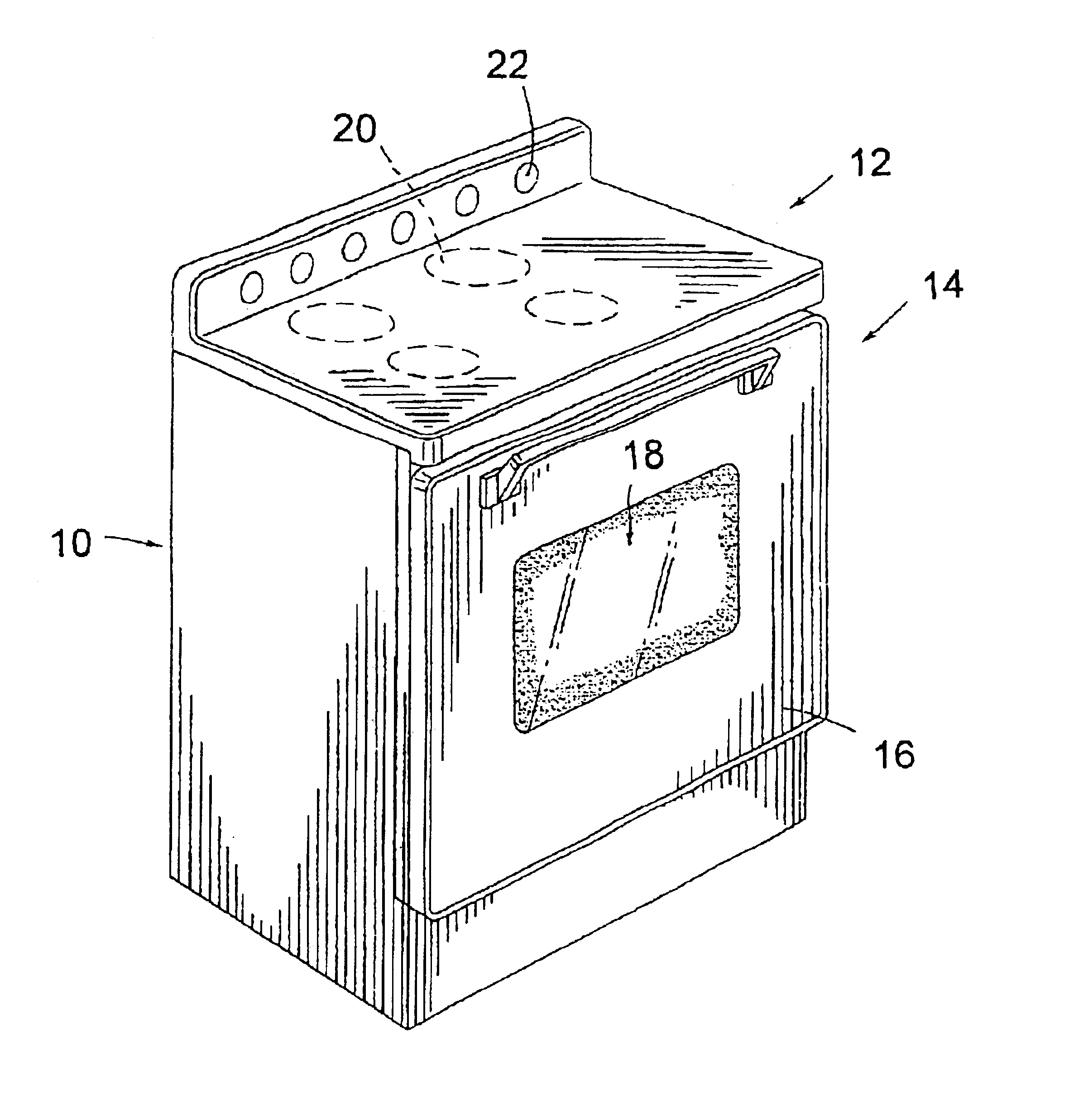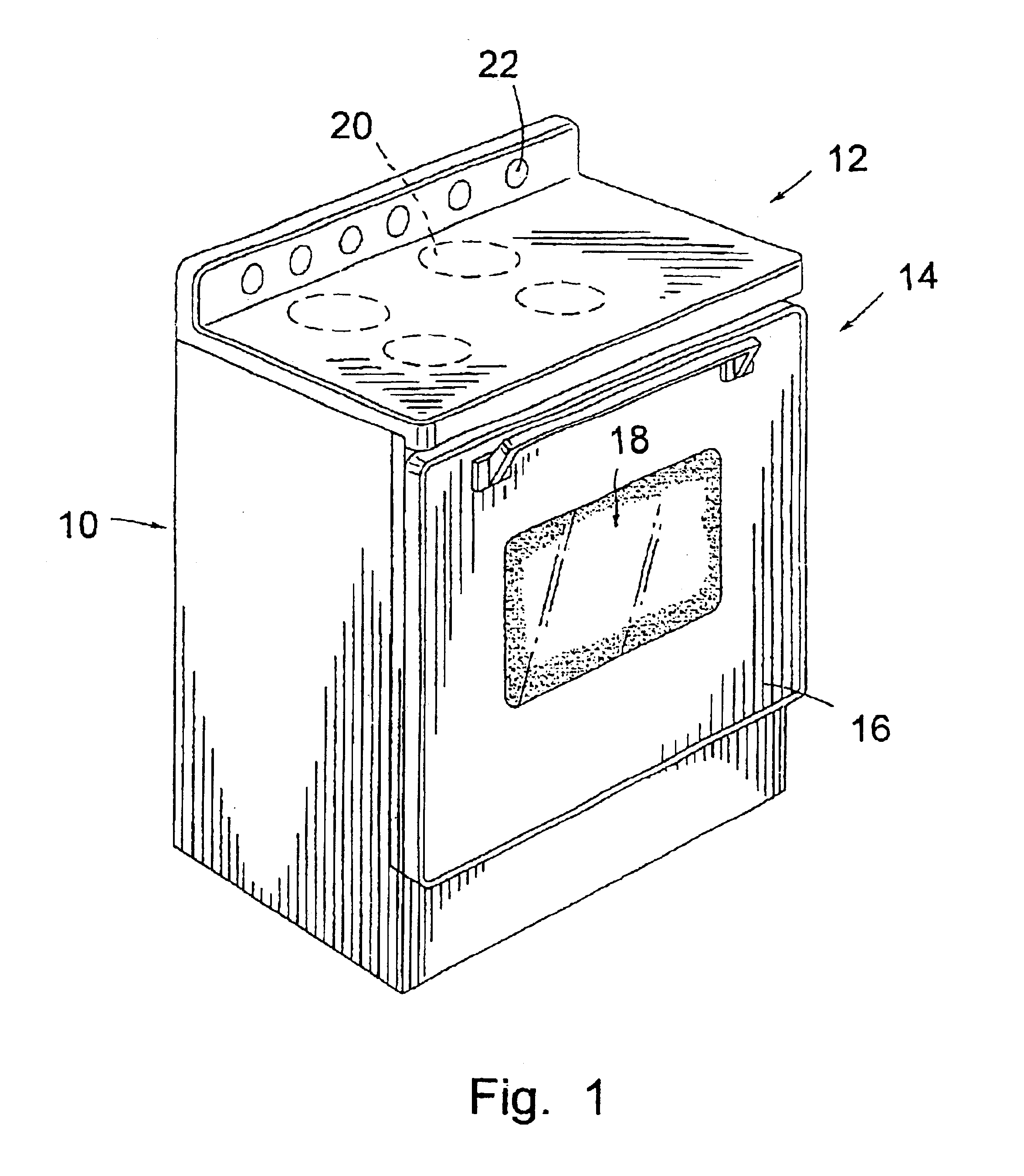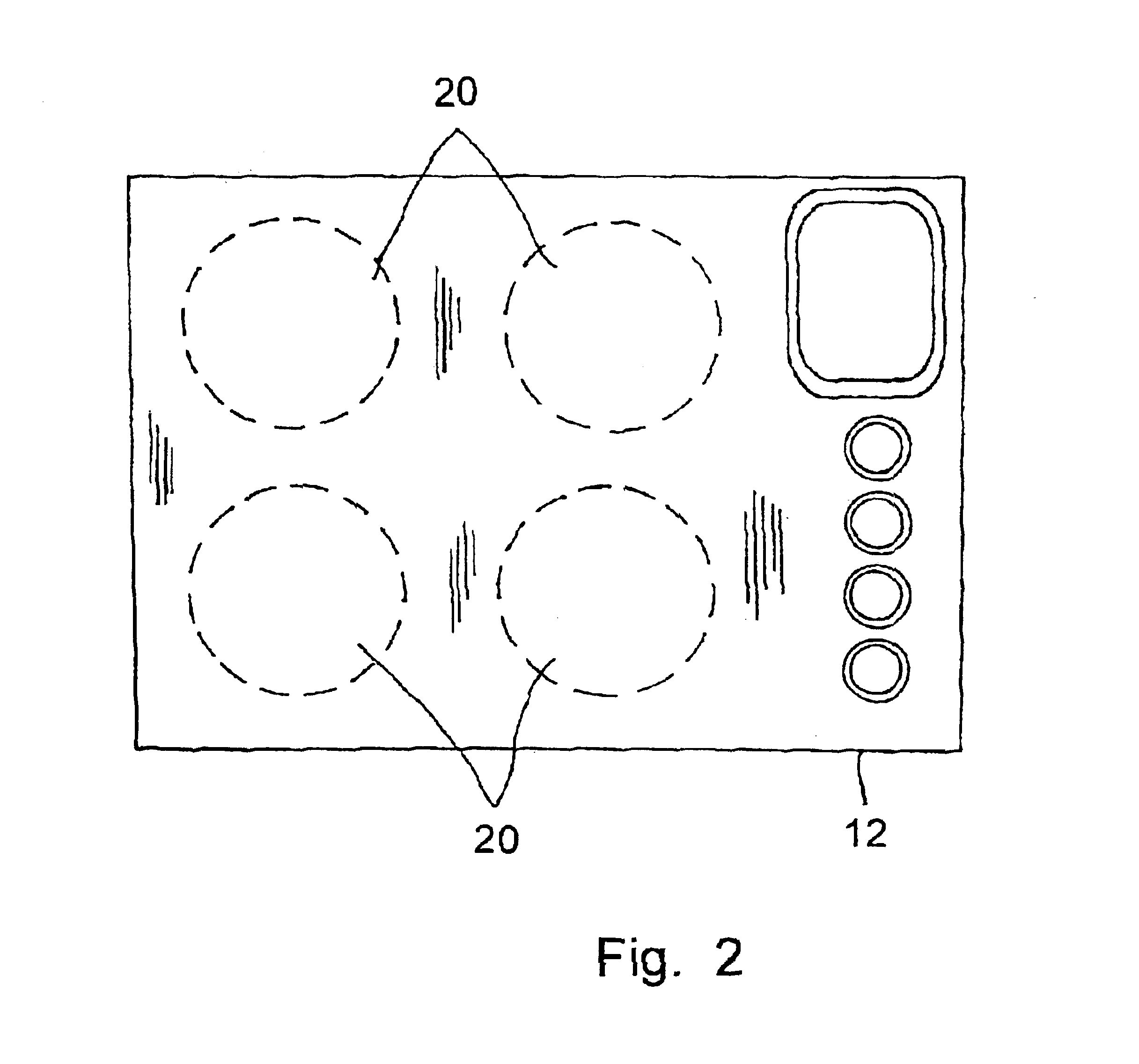Cooking stove and method for production and components thereof
a technology of cooking stove and components, which is applied in the field of cooking stoves, can solve the problems of affecting the recyclability and possibility of disposal in landfills, the inability to avoid undesired crystals in glass, and the inability to recycle substances, etc., and achieves the effects of reducing the infrared transmittance, and reducing the oxidation sta
- Summary
- Abstract
- Description
- Claims
- Application Information
AI Technical Summary
Benefits of technology
Problems solved by technology
Method used
Image
Examples
example no.1
EXAMPLE NO. 1
[0096]Starting composition (percent by weight): lithium oxide comprising three and eight tenths percent; sodium monoxide comprising five tenths percent; potassium monoxide comprising two tenths percent; magnesium oxide comprising nine tenths percent; barium oxide comprising one percent; zinc oxide comprising one and five tenths percent; aluminum oxide comprising twenty-one and five tenths percent; silicon dioxide comprising sixty-six and five tenths percent; titanium dioxide comprising two and four tenths percent; zirconium dioxide comprising one and seven tenths percent; Colored oxide (percent by weight): vanadium pentoxide comprising none. Reducing agent (percent by weight): antimony trioxide comprising one and five tenths percent; tin dioxide comprising none; other comprising none. Ceramization conditions: Nucleation seven hundred forty degrees Celsius; one-half hour. Crystallization eight hundred ninety degrees Celsius; one-half hour. Mössbauer measurements: Glassy ...
example no.2
EXAMPLE NO. 2
[0097]Starting composition (percent by weight): lithium oxide comprising three and eight tenths percent; sodium monoxide comprising five tenths percent; potassium monoxide comprising two tenths percent; magnesium oxide comprising nine tenths percent; barium oxide comprising one percent; zinc oxide comprising one and five tenths percent; aluminum oxide comprising twenty-one and five tenths percent; silicon dioxide comprising sixty-six and five tenths percent; titanium dioxide comprising two and four tenths percent; zirconium dioxide comprising one and seven tenths percent; Colored oxide (percent by weight): vanadium pentoxide comprising three tenths percent. Reducing agent (percent by weight): antimony trioxide comprising one and five tenths percent; tin dioxide comprising none; other comprising none. Ceramization conditions: Nucleation seven hundred forty degrees Celsius; one-half hour. Crystallization eight hundred ninety degrees Celsius; one-half hour. Mössbauer measu...
example no.3
EXAMPLE NO. 3
[0098]Starting composition (percent by weight): lithium oxide comprising three and eight tenths percent; sodium monoxide comprising five tenths percent; potassium monoxide comprising two tenths percent; magnesium oxide comprising nine tenths percent; barium oxide comprising one percent; zinc oxide comprising one and five tenths percent; aluminum oxide comprising twenty-one and five tenths percent; silicon dioxide comprising sixty-six and five tenths percent; titanium dioxide comprising two and four tenths percent; zirconium dioxide comprising one and seven tenths percent; Colored oxide (percent by weight): vanadium pentoxide comprising three tenths percent. Reducing agent (percent by weight): antimony trioxide comprising none; tin dioxide comprising none; other comprising none. Ceramization conditions: Nucleation seven hundred forty degrees Celsius; one-half hour; Crystallization eight hundred ninety degrees Celsius; one-half hour. Mössbauer measurements: Glassy, none. ...
PUM
| Property | Measurement | Unit |
|---|---|---|
| temperature | aaaaa | aaaaa |
| light transmittance | aaaaa | aaaaa |
| infrared wavelength | aaaaa | aaaaa |
Abstract
Description
Claims
Application Information
 Login to View More
Login to View More - R&D
- Intellectual Property
- Life Sciences
- Materials
- Tech Scout
- Unparalleled Data Quality
- Higher Quality Content
- 60% Fewer Hallucinations
Browse by: Latest US Patents, China's latest patents, Technical Efficacy Thesaurus, Application Domain, Technology Topic, Popular Technical Reports.
© 2025 PatSnap. All rights reserved.Legal|Privacy policy|Modern Slavery Act Transparency Statement|Sitemap|About US| Contact US: help@patsnap.com



